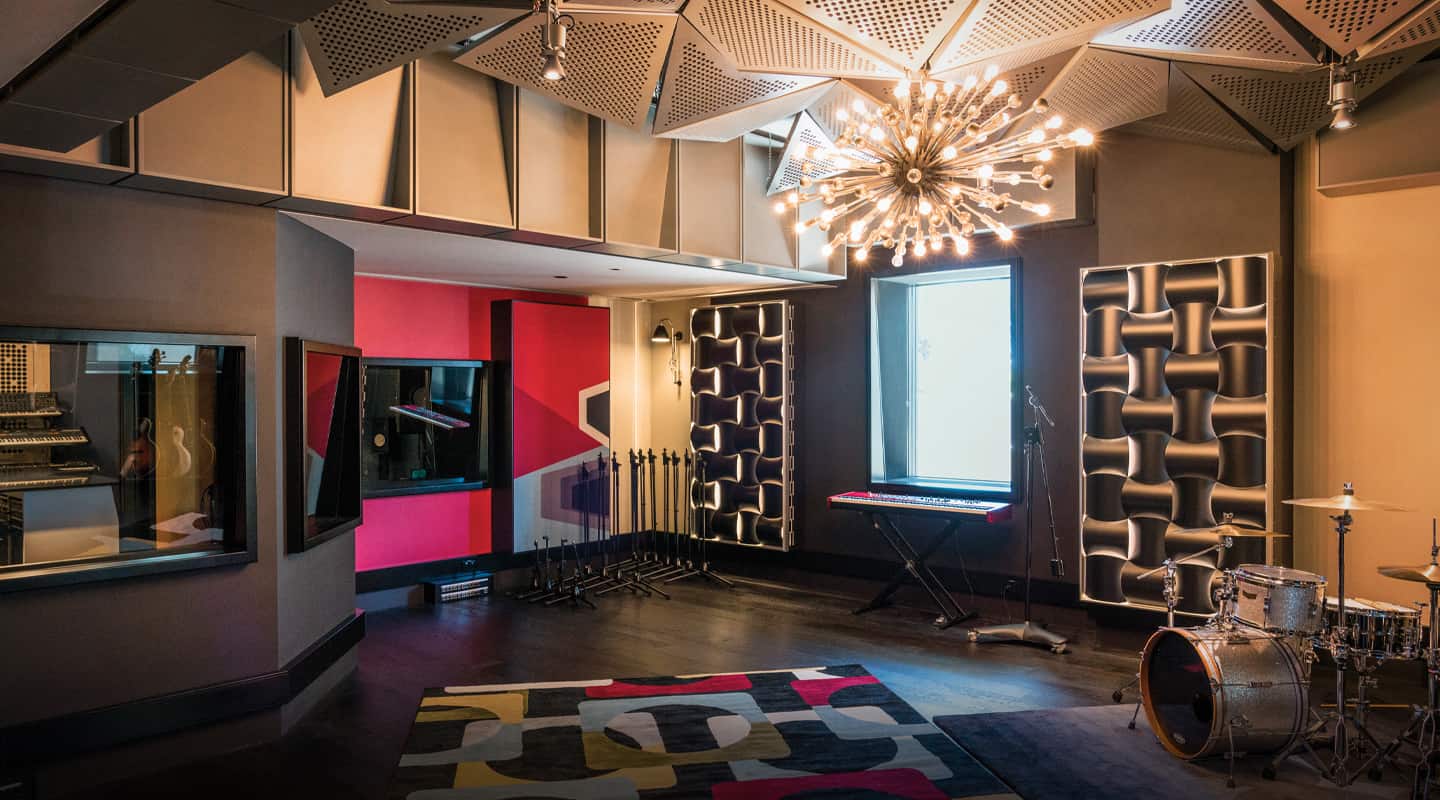
Universal Studio is for Everyone
Universal Music’s new Sydney studio, Forbes Street Studio, has cars travelling all around it — even underground. Michael Fronzek helped keep the noise out while maximising the reverb time.
Among the myriad reasons Universal Music built their own studio, was “the depressing news that Alberts closed as a studio, Sing Sing’s up on the block, and Studios 301 is soon to finish up where it is,” explained Managing Director Michael Taylor. “It felt like, ‘S**t, we still make records, we still need a place to do it!’”
Studio designer, Michael Fronzek, takes his hat off to them. “When was the last time you saw a record company build a recording studio in this country?” he asked. “I think it was 30 years ago. I’ve always thought the first thing a record company should do is build a studio. It’s intrinsic to what they do.”
Of all the record companies, Universal Music Group is probably the most active of studio owners, and it still only has a handful. There’s the big guns, Abbey Road and Capitol Studios, New York’s Republic has a studio, and according to Taylor there are a couple of other European-based studios Universal part owns. It’s not as though Universal has a studio on every street corner, but it now has one on the corner of Forbes and Williams Streets in downtown Wolloomoolloo.
It all started about two years ago, when Universal Music Australia relocated to its current building. The previous tenancy had no room for a studio, so when the 7 Eleven at the base of Universal’s new digs relocated across the street, Taylor immediately jumped on the freshly vacated ground floor corner space.
“We find ourselves creating more and more content for our artists — visual, live and bonus content,” said Taylor. “Having our own creative space is so good for that, because we don’t have to rely on hiring and bringing in other people.”
WORKING IN ISOLATION
The studio is multi-functional, with three main areas. The main live room is big enough to house a band or small string section, and it’s connected to the SSL AWS924 console-equipped control room; then there’s the smaller all-in-one Writing Room production space; lastly, an interview booth gives visiting artists a place to record radio interviews via a couple of Rode Procaster mics, and it’s connected to an A/V suite, which houses a six-core ‘trash can’ Mac Pro and professional audio-over-IP codecs to whip up all that content for distribution.
Michael Fronzek of Sound Spaces designed the entire studio, and his first act was to figure out how to fit it all in. He started with the control room. “When they told me they wanted to put in a console, I said we needed to start around the 35sqm mark,” he explained. “The Writing Room was always going to be a workstation-focused room, it needed to be around 25sqm. Everyone agreed on those dimensions once we’d sketched it out and got a sense of the size. After we had the two control room areas sorted out, it became easier to allocate the rest of the space to the studio, and figure out how to maximise the volume of the space.”
By volume he means the dimension, not level. With a slab-to-slab height of only four metres, he knew he had to make the most of every vertical inch. Directly underneath the building is a carpark and Sydney’s Cross City Tunnel. Then there’s the nearby railway and the perennially chocked Williams Street on the studio’s doorstep. Fronzek had some serious sound to isolate the studio from.
“We didn’t lay a second slab because I didn’t want to lose too much height,” he said, explaining that the classic double leaf, wood-framed room within a room structure ate up less of those precious metres. “A low ceiling is where you get your earliest reflections from. We ended up floating a timber floor on pads. We put down a layer of kiln-dried sand to help maximise the isolation and dampen the slab down to minimise any low frequency resonances from the carpark and tunnel. The sand goes to about half the height of the cavity because I didn’t want the sand to bridge to the floor. The insulation above that helps dampen the timber floor from below. The sand is covered in a membrane so it can’t get wet. If it gets wet, you lose the functionality of the sand, which is a great absorber.”
The same applied to the ceiling, where Fronzek was adamant about losing as little space as possible to ducting. Overall, he was happy with the 3.3m height that remained.
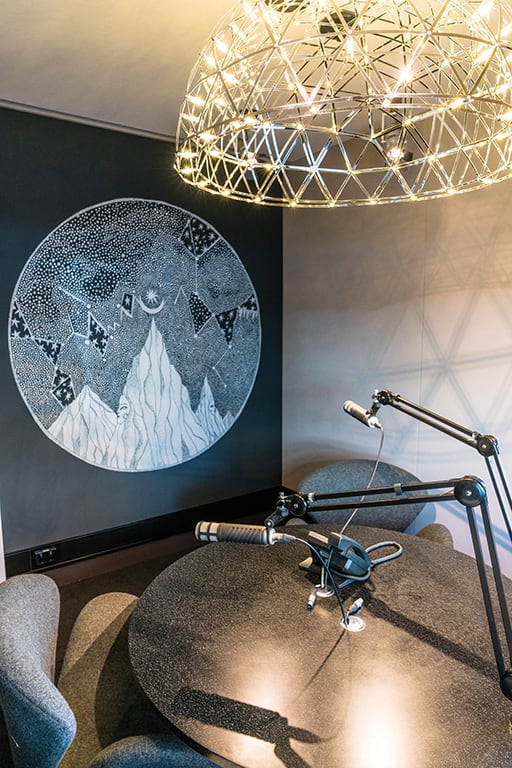

MAXIMUM REVERB TIMING
Once he knew what the volume of the live room was going to be, Fronzek was able to calculate the reverb time range. “I aimed for as high a reverb time as I could possibly get that sounded reasonable,” he said. “I could always pull it back from there if people found it too live.”
Fronzek mostly uses a collection of Excel models he’s refined over years of acoustic consultancy. He has a formula he uses to calculate the optimum reverb time for a control room of a given size. His goal for the live room is essentially double the reverb time of a control room of the same volume. “I build two models; one to reach my top goal, and one to reach my lower limit,” said Fronzek. “Once I have those two extremes, I start to put together my finishes to try to find a solution that allows me to move reasonably easily between those two extremes. Once I’ve got that range, then it’s about turning around and finding out what people like and dislike about it, and what we need to change within that range to better suit it.”
Other than the interlocked semi-cylindrical wall diffusors, the acoustic treatment in the ceiling is probably the most striking feature. Fronzek chose an elaborate diffusion technique that incorporates a Roger Penrose aperiodic system of tiles. “As you alter the height and angle of the faces, you get some nice, unusual reflections,” he explained. “It helps break up the flat isolation ceiling. We perforated them so we could put different absorbers or reflectors behind them, to achieve different grades of absorption.”
The RT60 reverb time is currently 0.53 seconds in the live room, but Fronzek has built in a level of variability to bring down the reverb time if required. “There’s a Plan A to Plan D with different levels of absorption and diffusion,” he said. “It’s not dynamically variable, but within a couple of hours we can go from one version to another.”
VARIETY IN THE LOW END
Fronzek says studio design hasn’t had a major shakeup lately, other than the progressive, and out of reach, ambechoic design of Blackbird’s Studio C. However, he says, a control room that can handle low end is more important than ever. “If you go back to the ’80s, everything was ‘radio-friendly’,” he recalled. “There wasn’t that extended bottom end. These days, there’s more focus on making the response of the room go lower than was necessary some time ago. The top six octaves are easy to deal with, it’s the bottom six octaves that are the hardest, and usually the ones that are treated least in studios.”
To keep it tidy down low, Fronzek uses a variety of diaphragmatic absorbers in the control room and studio. He uses a broad range of tunings to cover off all the modes in the room and keep them to a minimum. Variety is the key says Fronzek; in size, type and material of absorber: “When using modules with the same size and dimensions, you find the constant dimension imprints itself on the room. You start to see common problems related to that size module.”
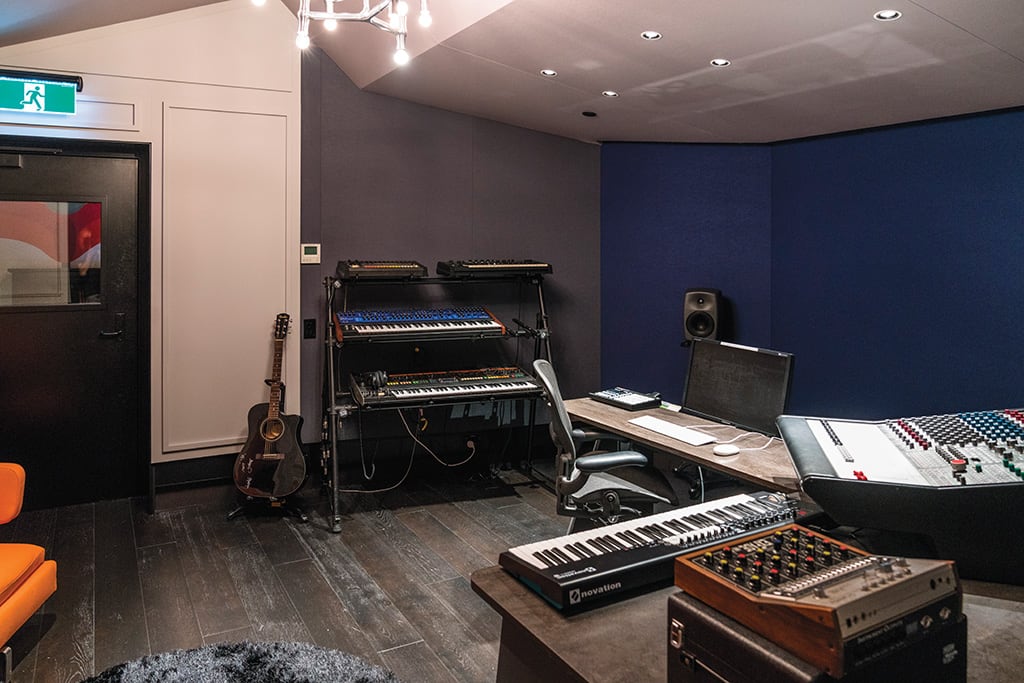
TAYLOR-MADE STYLE
When Taylor first conceived the studio, his main focus was on making a creative space, not just filling out the gear list. “We didn’t want to go for a traditional look with lots of wood,” he said. “We wanted to incorporate interesting colour choices and fabric designs.” He employed interior designer Nyree MacKenzie, who fits out hospitality spaces in Byron Bay, but was introduced to Taylor years ago by Tom Misner when she was a musician. She collaborated with Fronzek to help turn some of Taylor’s ideas into an acoustically-functional reality. “The brief for the Writing Room was to make it look like an eccentric Englishman’s study,” said Fronzek. “Michael showed us pictures of wall panelling from Victorian houses, and we used that as a starting point. It worked out well. It still has that wall panelling look to it, it was just a question of finding an acoustic solution that would suit the visual language.”
Fronzek returned to his Excel models for that too, explaining how he again uses a range of variability to account for any errors beforehand. “Even when you’re modelling, there’s still such a huge error from what you end up measuring at the end,” he said. “You’re always trying to allow an error in your predictions, and figuring out in advance how you’ll correct for that if required.”
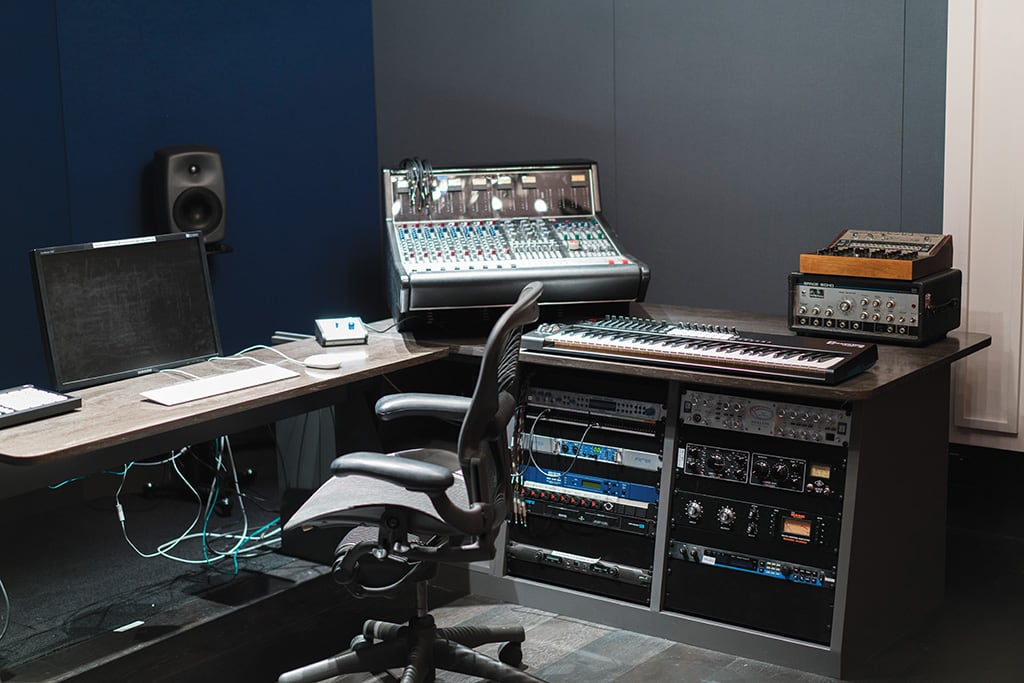
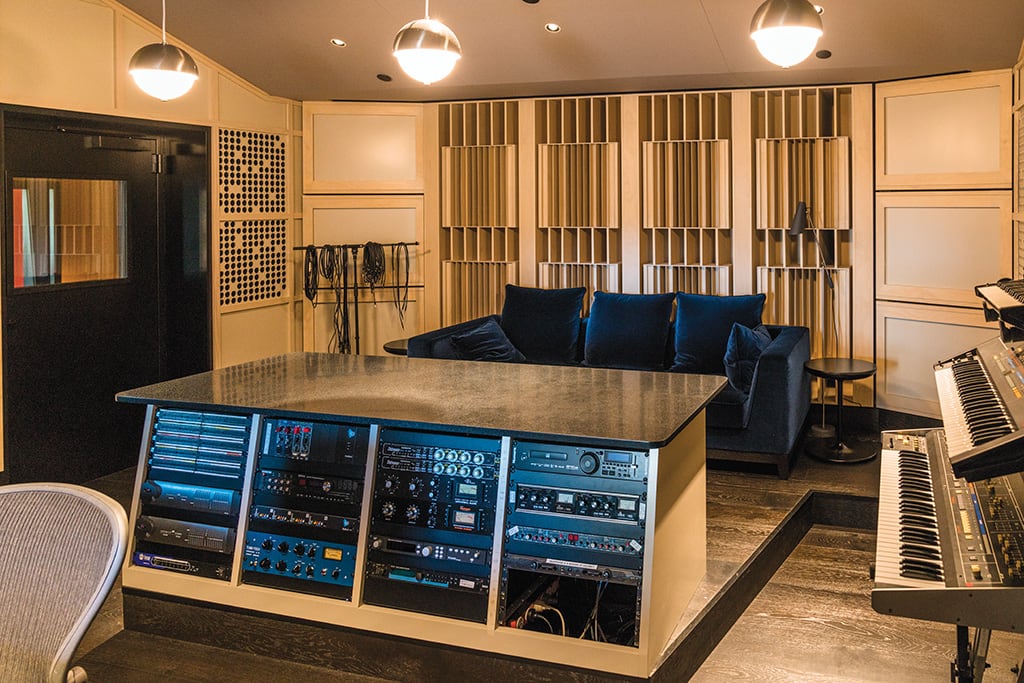
TUNING IN
All along the way, consultant Anthony Garvin has called on the collective expertise of a range of top engineers and producers around Sydney like Eric Dubowsky, David Nicholas and Paul Mckercher. Nick Didia and Bernard Fanning helped sell them on the SSL, since they work on Bernard’s SSL 900 every day. Others put in their outboard gear requests, and Anthony curated the microphone cabinet according to everyone’s top ten mics.
Even before the studio officially opened, producer Andy Mak recorded a whole track with country act The McClymonts. Jimmy Barnes’ son, Jackie, did a day of drum tracking to test the room in various spots and trying out different mics on the kit. “Tim Carr engineered that day, but it’s knowledge we can pass on to other engineers about which parts of the room sound live, meaty, or dead,” said Taylor. “Karise Eden has been in to write, as has Winterbourne. Over the next couple of weeks we go from Shawn Mendes, who’s in town, to the violinist Andre Rieu doing a performance for Sky News. He called and asked how much of the orchestra could he bring? Maybe a quarter of his string section!”
It appears to be working well so far, with only a couple of tune ups required in the live room before it opens to the public. That’s right, Forbes Street Studio will operate as a normal commercial concern. While Universal artists will undoubtedly receive preferential rates, anyone is able to hire this new creative space for their project. Taylor is still finalising the rates, but expect to see even more gear installed when the new year’s budgets kick in for January. Still, Garvin says having a professional collection of gear is a given, it’s really the vibe that’s resonating with people. “Engineers fuss over all the equipment,” he said. “But the design pushes the envelope from an artist’s perspective.”





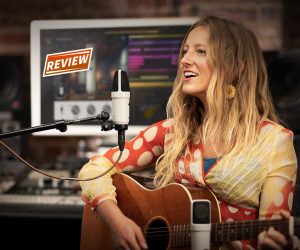










RESPONSES